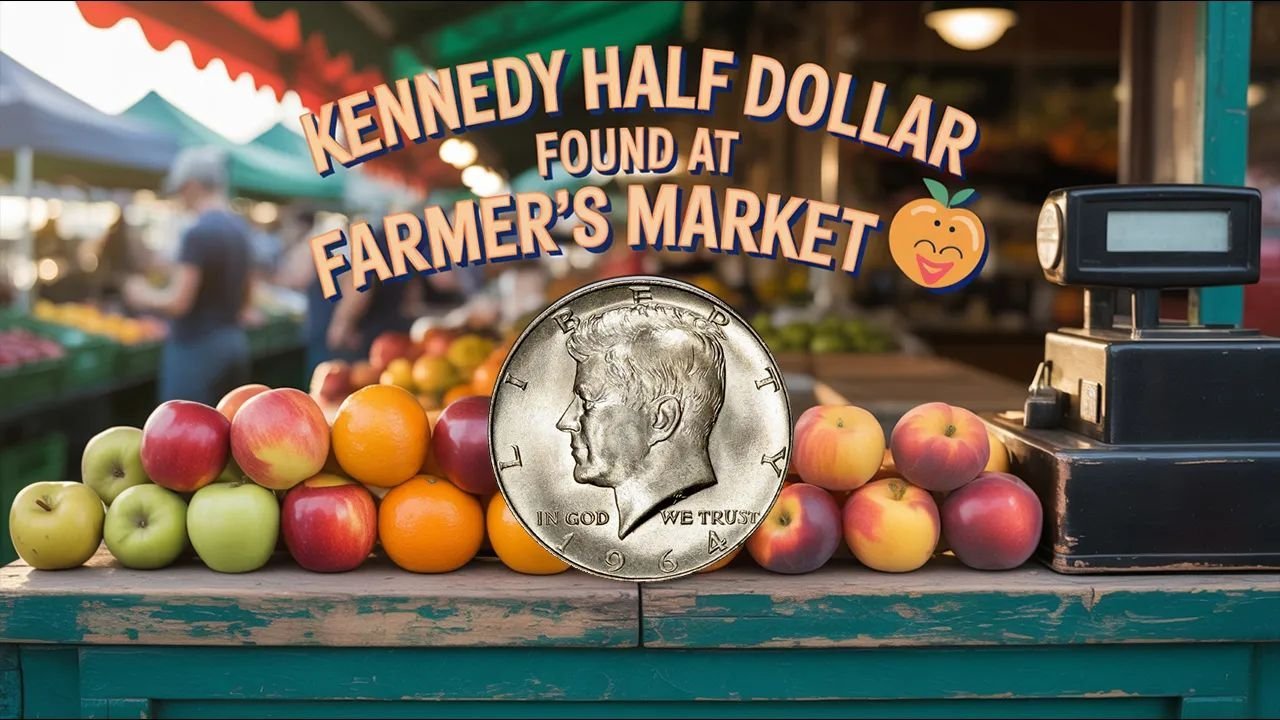There’s a certain rhythm to a farmer’s market—the rustle of reusable bags, the chatter between neighbors, the simple exchange of cash for goods. It’s a ritual grounded in the present moment. But recently, that rhythm was gently interrupted by an object from the past. During a routine purchase, a vendor handed a customer their change, and there, among the quarters and dimes, was a coin that made them pause: a Kennedy half dollar. This unexpected appearance sparked a wave of curiosity and conversation, a reminder that history has a way of surfacing in the most ordinary of places.
The Coin That Carries a Nation’s Memory
The Kennedy half dollar was first minted in 1964 as a nation’s tribute to a fallen president. More than just currency, it was a tangible expression of collective grief and respect. For many, the coin’s very existence is intertwined with the memory of President John F. Kennedy, making it a small, metallic artifact of a pivotal moment in American history. Its design, featuring a dignified profile of the president, feels both personal and official, a piece of national symbolism that fits in the palm of your hand.
The Ripple of Surprise Through the Crowd
The sight of the coin created a small but palpable stir. For older shoppers, it was a familiar friend from a bygone era, sparking memories of a time when half dollars were more common in registers and piggy banks. They shared stories with their children and grandchildren, bridging generations with a simple story. For younger market-goers, it was a novelty—a coin they had perhaps heard of but had never actually held. This shared moment of discovery transformed a line of individuals into a connected, if temporary, community.
More Than Fifty Cents: Understanding Its True Worth
While any Kennedy half dollar is legal tender for fifty cents, its value can be layered. The ones minted in 1964 are composed of 90% silver, giving them intrinsic value far beyond their face amount. Even later, non-silver versions can be desirable to collectors if they are in exceptional condition, have a rare mint mark, or feature a striking error. The coin found at the market may or may not have been a hidden financial treasure, but its power to captivate and educate made it invaluable in that moment.
Why Is It So Unusual to Find One Today?
The sudden appearance of such a coin in daily life feels remarkable precisely because it is so rare. The U.S. Mint still produces Kennedy half dollars, but primarily for collector sets. They are no longer released into general circulation in significant numbers. So, how do they find their way back into a farmer’s market till? Often, it’s through the gentle cycle of rediscovery—a grandparent’s coin collection being sorted, an old jar of savings finally being cashed in, or a thoughtful individual who decides to spend a saved coin, setting it on a new journey.
The Quiet Resurgence of Coin Collecting
Discoveries like this are fuel for a growing passion. In a digital age, the physicality of coins—their weight, design, and history—holds a new appeal. Social media is filled with stories of people finding unusual coins in their change, inspiring others to look more closely. The Kennedy half dollar, with its poignant backstory and distinctive size, often serves as a “gateway coin,” drawing new enthusiasts into the rewarding hobby of numismatics and encouraging a deeper appreciation for the stories in our pockets.
A Moment That Meant More Than Money
In the end, the Kennedy half dollar at the farmer’s market was more than a monetary token. It was a touchstone. It prompted stories, sparked curiosity, and connected people to a broader narrative. It proved that history isn’t always confined to textbooks; sometimes, it’s passed from a vendor’s hand to a customer’s, waiting to be recognized. It’s a reminder to all of us to occasionally look down at the change we receive—we might just be holding a small, silver piece of yesterday.
Frequently Asked Questions
Q1: Is it legal to spend a Kennedy half dollar?
Absolutely. A Kennedy half dollar is legal U.S. tender worth fifty cents. While you can spend it, many people choose to save them because of their historical significance or potential collector value.
Q2: How can I tell if my Kennedy half dollar is made of silver?
Check the date. Coins dated 1964 are 90% silver. Those dated from 1965 through 1970 are made of 40% silver. Any Kennedy half dollar from 1971 to the present is made of a copper-nickel blend, unless it is a special silver proof edition sold by the Mint.
Q3: Why did the half dollar become so uncommon in everyday life?
As the cost of goods rose over the decades, the half dollar became less practical for vending machines and cash transactions. Furthermore, public familiarity with the coin faded over time, and the Mint eventually shifted its production focus to meet collector demand rather than circulation needs.
Q4: What is the best way to preserve a Kennedy half dollar I find?
Handle it carefully by the edges to avoid leaving fingerprints. Store it in a soft cloth, a paper envelope, or a dedicated coin holder to protect it from scratches and environmental damage. Avoid cleaning the coin, as this can diminish its value.
Q5: Where else might I find an old coin in circulation?
Besides farmer’s markets and small businesses, try your hand at searching rolls of coins from the bank. Coin roll hunting is a popular hobby where collectors acquire rolled coins to search for rare dates, errors, and silver content before returning the common coins to the bank.
